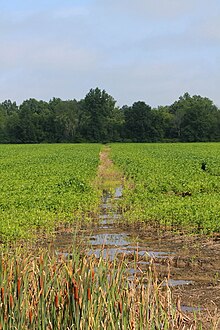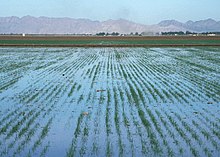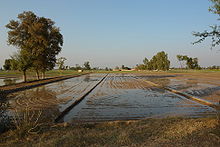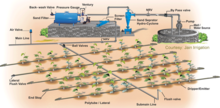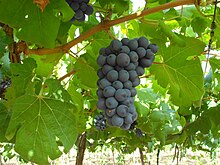 UTANGULIZI
UTANGULIZINYANYA NI ZAO LA CHAKULA NA BIASHARA. KILIMO CHA ZAO HILI HUFANYIKA MAJIRA YOTE
(MASIKA NA KIANGAZI), NA FAIDA HUPATIKANA HARAKA NA NI YA KURIDHISHA IKILINGANISHWA
NA MAZAO MENGINE. PAMOJA NA UMUHIMU WA ZAO HILI, WADUDU WAHARIBIFU NA
MAGONJWA HUATHIRI UZALISHAJI NA UBORA WA MATUNDA. ILI MKULIMA AWEZE KUPATA FAIDA
NA KUONGEZA PATO LA KAYA YAKE NI VEMA KUZINGATIA UDHIBITI WA MAGONJWA NA WADUDU
WA ZAO HILI. KIPEPERUSHI HIKI KINATOA MAELEZO YA UDHIBITI WA MAGONJWA NA WADUDU
MUHIMU YA ZAO LA NYANYA.
MAGONJWA YA NYANYA
BAKAJANI CHELEWA (LATE BLIGHT)
UGONJWA HUU HUENENZWA NA VIMELEA VYA FANGASI. HUSABABISHWA NA HALI YA HEWA HASA
YA UNYEVUNYEVU, NA HUENEZWA NA UPEPO. MAJANI, SHINA, MATUNDA HUSHAMBULIWA.
MAJANI HUWA NA UKUNGU MWEUPE NA KIJIVU, NA BAADAYE HUKAUKA. MATUNDA HUWA NA
MABAKA YA KIKAHAWIA NA BAADAYE KUOZA. MASHINA PIA HUWA NA MABAKA YA KIKAHAWIA.
UDHIBITI· NYUNYIZA DAWA YA KUZUIA UKUNGU HASA WAKATI WA MASIKA, DAWA
ZINAZOPENDEKEZWA NI RIDOMIL, DITHANE 45, BRAVO, FUNGURAN, MILRAZ.
· FANYA MZUNGUKO WA MAZAO. USIPANDE NYANYA SEHEMU MOJA KILA MSIMU AU
PALIPOLIMWA MAZAO JAMII YA NYANYA KM VIAZI MVIRINGO, BILINGANYA, AINA ZOTE
ZA PILIPILI NA NYANYA CHUNGU.
· TUMIA MBEGU SAFI
· PANDA AINA ZA NYANYA ZINAZOVUMILIA UGOMJWA
BAKAJANI TANGULIA (EARLY BLIGHT)
HUENEZWA NA VIMELEA VYA FANGASI. HUSABABISHWA NA KUENEZWA NA HALI YA HEWA
PAMOJA NA MBEGU ZENYE UGONJWA. MABAKA YA KAHAWIA YENYE MISTARI YA MVIRINGO
HUONEKANA KWENYE MAJANI NA SHINA. BAKA JEUSI HUTOKEA SEHEMU YA TUNDA
INAYOSHIKANA NA KIKONYO.
UDHIBITI· NYUNYIZA DAWA YA KOCIDE, FUNGURAN
· TEKETEZA MABAKA YA MAZAO BAADA YA KUVUNA
· TUMIA MBEGU SAFI NA BORA
MNYAUKO FUSARI (FUSARIUM WILT)
HUENEZWA NA MBEGU ZENYE UGONJWA. HUSAMBAZWA NA VIMELEA VYA FUNGASI
VINAVYOISHI KWENYE UDONGO.
UGONJWA HUJITOKEZA ZAIDI WAKATI WA KIANGAZI. VIMELEA HUSHAMBULIA SEHEMU AU
MIRIJA YA MMEA YA KUPITISHIA MAJI NA CHAKULA. MMEA HUKOSA MAJI NA CHAKULA NA
HATIMAYE HUNYAUKA. SHINA LA MMEA LIKIPASULIWA NDANI HUONEKANA RANGI YA KIKAHAWIA.
UDHIBITI· TUMIA MBEGU SAFI NA BORA
· TUMIA MZUNGUKO WA MAZAO. NYANYA ZISIZUNGUSHWE NA MAZAO JAMII YAKE
· TEKETEZA MASALIA YA MIMEA
WWW.ARIUYOLE.GO.TZ
· CHOMA KITALU CHA NYANYA KABLA YA KUSIA MBEGU
MNYAUKO BACTERIA (BACTERIAL WILT)
UGONJWA HUSABABISHWA NA VIMELEA VYA BACTERIA VINAVYOISHI KWENYE UDONGO.
HUENEZWA NA KUSAMBAZWA NA MBEGU NA UDONGO WENYE VIMELEA. MIRIJA YA MIMEA YA
KUPITISHIA MAJI NA CHAKULA HUSHAMBULIA NA MIMEA HUNYAUKA GHAFLA. MMEA HUKAUKA
NA KUFA.
UDHIBITI· PANDA MBEGU SAFI
· PANDA NYANYA SEHEMU AMBAYO HAIJAWAHI KUPANDWA VIAZI MVIRINGO,
BILINGANYA AU NYANYA CHUNGU
· TUMIA MZUNGUKO WA MAZAO
· HAKIKISHA MFEREJI WA MAJI YA KUMWAGILIA HAYAPITI KWENYE SHAMBA LENYE
HISTORIA YA UGONJWA HUU.
· CHOMA KITALU CHA NYANYA KABLA YA KUSIA MBEGU
MNYAUKO VETISILI (VERTICILLUM WILT)
HAKUNA DAWA INAYOZUIA AU KUTIBU UGONJWA HUU KWA SASA. UGONJWA HUSABABISHWA NA
UKUNGU (FANGASI) KWENYE UDONGO. UKUNGU HUU HUISHI KWENYE UDONGO KWA MUDA
MREFU BILA KUDHURIKA. UGONJWA HUONGEZEKA IKIWA MIZIMIZI YA NYANYA
IMESHAMBULIWA NA MINYO FUNDO; AU KUKIWEPO NA HALI YA UBARIDI AU UKAME. UGONJWA
HUSABABISHA HASARA KUBWA. UGONJWA HUSHAMBULIA SEHEMU YA NDANI YA SHINA NA
KUSABABISHA SEHEMU HIYO KUWA NA RANGI YA KIJIVU. MAJANI HUGEUKA NJANO NA MIMEA
KUNYAUKA NA KUFA.
UDHIBITI· TUMIA MZUNGUKO WA MAZAO USIOPUNGUA MIAKA MINE
· ONDOA MABAKI YA NYANYA SHAMBANI
· TUMIA MBEGU BORA NA SAFI
BAKADOA (BACTERIAL SPOT)
UGONJWA HUU HUENEZWA NA VIMELEA VYA BACTERIA VINAVYOISHI KWENYE MBEGU, PIA
KWENYE HEWA. HUENEZWA KWA KASI SANA WAKATI WA MASIKA. MADOA YA RANGI KAHAWIA
HUONEKANA KWENYE MAJANI NA MATUNDA.
UDHIBITI· PANDA MBEGU BORA NA SAFI
· TUMIA MZUNGUKO WA MAZAO
· TEKETEZA MASALIA YA MAZAO
· NYUNYIZIA DAWA YA FUNGURAN, KOCIDE101, COBOX, BRAVO
MAKOVU BAKTERIA (BACTERIAL CANKER)
UGONJWA HUENEZWA NA VIMELEA VYA BACTERIA VINAVYOISHI KWENYE MBEGU NA HEWANI.
HUTOKEA ZAIDI WAKATI WA MASIKA. MAJANI HUKAUKA NCHANI NA MAKOVU YALIYODIDIMIA
HUTOKEA KWENYE SHINA. MATUNDA HUWA NA MAKOVU YENYE RANGI YA KAHAWIA SEHEMU YA
KATIKATI.
UDHIBITI· TUMIA MBEGU BORA NA SAFI
WWW.ARIUYOLE.GO.TZ 2
· TEKETEZA MASALIA YA MAZAO
· TUMIA MZUNGUKO WA MAZAO
RASTA (YELLOW LEAF CURL)
UGONJWA HUU HUSABABISHWA NA VIRUSI NA HUENEZWA NA NZI WADOGO WEUPE. HUTOKEA
ZAIDI WAKATI WA KIANGAZI. MIMEA HUDUMAA NA MAJANI YALIYOSHAMBULIWA HUWA NA
RANGI YA MANJANO NA PENGINE RANGI YA ZAMBARAU. NYANYA HUPASUKA.
UDHIBITI· NYUNYIZA DAWA ZA SUMU ZA KUUA WADUDU (SELECRON, DURSBURN, ACTELIC)
· NG’OA MIMEA YENYE UGONJWA
· TUMIA MZUNGUKO WA MAZAO
· WEKA SHAMBA KATIKA HALI YA USAFI
BATOBATO (TOMATO MOSAIC VIRUS)
UGONJWA HUSABABISHWA NA VIRUSI NA HUEEZWA NA MBEGU NA KUGUSANA. MAJANI HUWA NA
MCHANGANYIKO WA RANGI HASA KIJANI KIBICHI NA KIJANI KILICHOFIFIA (MAJANO). MAJANI
HUJIKUNJA NA MANJANI MACHANGA HUWA NA MAUMBILE YASIYO KAWAIDA. UKIFIKISHA JANI
HUWA LINAVINJIKAVUNJIKA.
UDHIBITI· TUMIA MBEGU BORA NA SAFI
· NG’OA MIMEA ILIYOSHAMBULIWA
· TEKETEZA MASALIA YA MAZAO
· WEKA SHAMBA KATIKA HALI YA USAFI

WADUDU WAHARIBIFUVIWAVI MATUNDA (FRUIT WORM)
VIWAVI HAWA HUTOKANA NA WADUDU NONDO. VIWAVI HUTOBOA MATUNDA NA KUACHA
MATUNDU NA HATIMAYE MATUNDA HUOZA. HUPUNGUZA UBORA WA MATUNDA.
UDHIBITINYUNYIZIA DAWA YA KUUA WADUDU. DAWA HIZO NI PAMOJA NA ACTELIC 50EC, SELECTRON,
DURSBAAN, MAJI YA MAJANI YA MWAROBAINI AU UTUPA PIA HUUA WADUDU.
UTITIRI WEKUNDU (RED SPIDER MITES)
HAWA NI WADUDU WEKUNDU, WADOGO SANA WANAOWEKA UTANDO CHINI YA MAJANI, HASA
WAKATI WA KIANGAZI. WADUDU HAWA HUFYONZA UTOMVU KWENYE MAJANI NA KUSABABISHA
MAJANI KUKAUKA.
UDHIBITI· NYUNYIZIA DAWA ZA SUMU. DAWA HIZO NI PAMOJA NA ACTELLIC, SELECRON,
DURSBARN NA THIONEX
· MWAGILIA MAJI MARA KWA MARA
· WEKA SHAMBA KATIKA HALI YA USAFI
WWW.ARIUYOLE.GO.TZ 3
INZI WEUPE (WHITE FLIES)
HAWA NI INZI WEUPE WADOGO SANA. HUJITOKEZA SANA WAKATI WA KIANGAZI. HUENEZA
UGONJWA WA VIRUSI UJULIKANAO KAMA RASTA.
UDHIBITINYUNYIZIA DAWA ZA SUMU ZA KUULIA WADUDU KAMA SELECRON, ACTELLIC, DURSBAN NA
THIONEX. PIA MAJI YA MAJANI YA MWAROBAINI NA UTUPA.
VIDUKARI AU WADUDU MAFUTA (APHIDS)
NI WADUDU WENYE RANGI NYEUSI AU KUIJANI AU KAHAWIA. HUKAA CHINI YA MAJANI NA
KUFYONZA UTOMVU KWENYE MAJANI MACHANGA. HUDUMAZA MMEA NA KUSHINDWA KUZAA
MATUNDA
UDHIBITINYUNYIZIA DAWA ZA SUMU ZA KUULIA WADUDU KAMA ROGOR, ACTELLIC, SELECRON, DURSBAN
MAJI YA MAJANI YA MWAROBAINI NA UTUPA, MAJI YA PILIPILI.
MINYOO (NEMATODES)
NI MINYOO MIDOGOMIDOGO AMBAYO HUSHAMBULIA MIZIZI NA KUWEKA VIFUNDO. MIZIZI
HUSHINDWA KUCHUKUA MAJI NA CHAKULA KWENYE UDONGO. MIMEA HUDUMAA NA
KUSHINDWA KUZAA
UDHIBITI· TUMIA MZUNGUKO WA MAZAO
· CHOMA UDONGO WA KITALU KABLA YA KUSIA MBEGU KWA KUTUMIA KARATASI LA
PLASTIKI JEUSI NA NISHATI YA JUA
· CHOMA MASALIA YA MAZAO
SOTA (CUTWORMS)
HUSHAMBULIA MICHE YA NYANYA HASA BAADA YA KUPANDIKIZWA SHAMBANI. WAKATI WA
MCHANA HUJIFICHA KWENYE UDONGO NA USIKU HUJITOKEZA NA KUKATA MICHE KWENYE SHINA
USAWA WA UDONGO.
UDHIBITI· NYUNYIZA DAWA ZA KUUA WADUDU KWENYE SHINA USAWA WA UDONGO
· HAKIKISHA MICHE INAPATA MAJI YA KUTOSHA.















